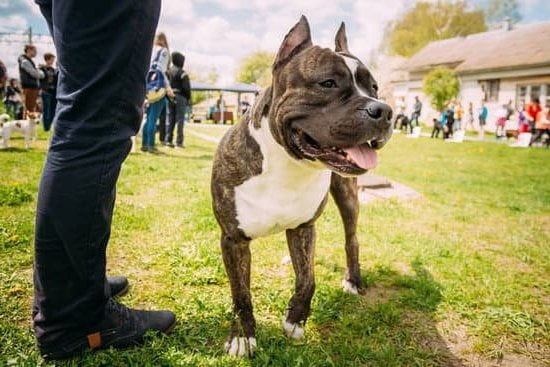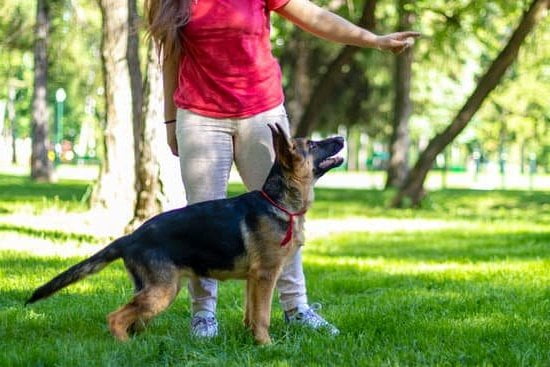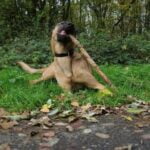Training your dog in agility can be an incredibly rewarding experience for both you and your furry companion. In this guide on how to train dog agility, we will explore the various aspects of agility training, from understanding the benefits it can offer to essential equipment needed for successful training sessions.
Agility training is not only a fun way to keep your dog physically active but also helps improve their mental sharpness and strengthens the bond between you and your pet.
Engaging in agility exercises with your dog can provide numerous advantages beyond just physical fitness. It can help boost their confidence, improve obedience, and enhance their overall behavior. By incorporating agility training into your routine, you’re not only providing a stimulating activity for your dog but also promoting a healthy and happy lifestyle for them.
Whether you are completely new to agility training or looking to enhance your current skills, this comprehensive guide will cover everything you need to know to get started. From basic commands and techniques to overcoming common challenges in training, we will walk you through each step of the process towards achieving success in agility training with your beloved pet.
Understanding the Benefits of Dog Agility for Your Pet
Dog agility training offers numerous benefits for your pet beyond just physical exercise. It provides mental stimulation, improves obedience, strengthens the bond between you and your dog, and boosts their confidence. As a pet owner, understanding these advantages can motivate you to engage in regular agility training sessions with your furry friend.
One significant benefit of dog agility is the mental stimulation it provides. The mental challenge of learning new skills, following commands, and navigating obstacles can help keep your dog’s mind sharp and engaged. This is especially important for intelligent breeds or high-energy dogs that may become bored easily without mental stimulation.
Additionally, agility training can improve your dog’s overall obedience by reinforcing commands and increasing their responsiveness to your cues. Through consistent training sessions, your pet will learn to follow instructions promptly, which can be beneficial in other areas of their life as well. Training your dog agility not only enhances their physical abilities but also helps them develop better listening skills and self-control.
Furthermore, engaging in agility training with your dog can strengthen the bond between the two of you. Spending quality time together during training sessions creates a positive association with you as their companion and trainer. This shared experience fosters trust and communication between you and your pet, ultimately deepening your relationship.
Essential Equipment Needed for Dog Agility Training
When it comes to training your dog for agility, having the right equipment is essential to ensure a safe and effective training session. Here are some key pieces of equipment you will need:
- Agility Tunnel: A tunnel is a fun obstacle that helps improve your dog’s confidence and agility skills.
- Jump Bars: These are adjustable bars that can be set at different heights for your dog to jump over. They help improve your dog’s coordination and jumping ability.
- Weave Poles: Weave poles are a series of upright poles that your dog must weave in and out of. This helps improve your dog’s agility and focus.
- Tire Jump: This obstacle consists of a tire hung from a frame that your dog must jump through. It helps improve your dog’s jumping technique and coordination.
In addition to these obstacles, you will also need some basic training tools such as treats, clickers, and a leash. Treats are used as rewards for good behavior, clickers help reinforce positive behaviors, and a leash can be used to guide your dog through the course.
Training Tip
It’s important to introduce each piece of equipment slowly and allow your dog to become familiar with it before incorporating it into the agility course. This will help prevent any fear or hesitation from your dog.
Remember, safety should always be the top priority when setting up an agility course for your pet. Ensure that all equipment is sturdy and in good condition before each training session to prevent any accidents or injuries. With the right equipment and proper training techniques, you can help your furry friend excel in the exciting world of dog agility.
Choosing the Right Location for Training Sessions
Choosing the right location for your dog agility training sessions is crucial to ensure a safe and effective training environment. When scouting for a suitable location, consider factors such as space, terrain, and accessibility. An ideal location should offer enough room for your dog to run and maneuver through various obstacles without any obstructions. Look for an open area like a park, backyard, or empty field where you can set up your agility course without any restrictions.
Another important consideration when choosing a training location is the terrain. Opt for a flat surface that is free from any potential hazards such as sharp objects, holes, or slippery surfaces. A level ground will help prevent injuries to your dog while navigating the agility course. Additionally, ensure that the area is spacious enough to accommodate all necessary equipment like jumps, tunnels, weave poles, and A-frames without feeling cramped.
Accessibility is also key when selecting a location for dog agility training. Choose a spot that is easily accessible by both you and your furry companion. A convenient location will make it easier for you to transport equipment to and from the training site and will encourage regular practice sessions. Consider factors such as proximity to your home, availability of parking, and any permits required if using public spaces for training purposes.
| Factors to Consider | Importance |
|---|---|
| Space | Ensure enough room for dog’s movement |
| Terrain | Choose a safe and flat surface |
| Accessibility | Easily reachable by both owner and pet |
Basic Commands and Techniques for Agility Training
When it comes to training your dog for agility, mastering basic commands and techniques is essential. These foundational skills will not only help your dog navigate through different obstacles effectively but also build a strong foundation for more advanced maneuvers in the future.
Start With Basic Commands
Begin by teaching your dog basic commands like “sit,” “stay,” “come,” and “down.” These commands will form the building blocks for more complex agility maneuvers. Make sure your dog understands and follows these commands consistently before moving on to agility-specific techniques.
Introduce Agility-Specific Techniques
Once your dog has mastered basic commands, you can start introducing agility-specific techniques such as jumping, tunnel runs, weave poles, and A-frame climbs. Use positive reinforcement and plenty of rewards to encourage your dog to perform these tasks successfully.
Practice Makes Perfect
Consistent practice is key to perfecting agility skills. Set aside regular training sessions to work on different obstacles and courses. Repetition is crucial for reinforcing learned behaviors and building muscle memory. Remember that each dog learns at their own pace, so be patient and provide plenty of encouragement throughout the training process.
By focusing on teaching your dog basic commands and introducing them to agility-specific techniques, you are laying the groundwork for a successful agility training journey. With dedication, patience, and positive reinforcement, you can help your furry friend develop the skills needed to excel in agility competitions or simply enjoy a fun and engaging activity together.
Creating a Training Schedule and Consistency
Training your dog for agility is not just about teaching them maneuvers and commands; it’s also about consistency and scheduling. Having a structured training schedule ensures that your dog gets the necessary physical exercise and mental stimulation required for agility training. Here are some tips on how to create a training schedule for your furry friend:
- Set specific training days and times: Determine which days of the week and what times work best for you to conduct training sessions with your dog. Consistency is key in reinforcing agility skills.
- Balance different aspects of training: Make sure to include a mix of agility exercises, obedience drills, and rest days in your schedule. This helps prevent burnout and keeps your dog engaged.
- Gradually increase difficulty: As your dog progresses in their training, gradually increase the difficulty level of exercises and introduce new challenges to keep them mentally stimulated.
Consistency in training is crucial for your dog to retain what they have learned and improve their agility skills. By sticking to a set schedule, you can help ensure that your dog continues to develop their abilities and enjoy the process.
- Track progress: Keep a log or journal of your dog’s progress in agility training, noting any improvements or areas that need more work. This can help you adjust your schedule accordingly.
- Seek professional guidance: If you’re unsure about how to structure a training schedule or would like expert advice on agility training, consider enrolling in classes led by experienced trainers.
- Stay patient and positive: Every dog learns at their own pace, so be patient with them during the learning process. Use positive reinforcement techniques to encourage good behavior and progress.
Implementing Positive Reinforcement in Training
Positive reinforcement is a crucial aspect of training your dog for agility. This training method involves rewarding your dog with treats, praise, or toys when they exhibit the desired behavior. By using positive reinforcement, you can motivate your dog to continue performing well during training sessions.
Using Treats and Rewards
One of the most effective ways to reinforce positive behavior in agility training is by using treats as rewards. Make sure to choose high-value treats that your dog loves and only give them when they successfully complete a task or obstacle. This will create a strong association between the desired behavior and the reward, encouraging your dog to repeat the behavior in the future.
Consistent Praise and Affection
In addition to treats, it’s essential to shower your dog with praise and affection during training sessions. Dogs thrive on positive feedback from their owners, so be generous with your verbal praise, cuddles, and belly rubs when they successfully perform an agility skill. This will strengthen the bond between you and your furry friend while reinforcing their good behavior.
Avoid Punishment
It’s important to remember that positive reinforcement should focus on rewarding good behavior rather than punishing bad behavior. Avoid scolding or punishing your dog if they make mistakes during training sessions. Instead, redirect their attention to the correct behavior and reward them when they succeed. This approach will create a positive learning environment for your pet and improve their overall performance in agility training.
Progressing to Advanced Agility Skills and Competitions
Once your dog has mastered the basic commands and techniques in agility training, it may be time to progress to advanced skills and even consider entering competitions. Advanced agility skills include more complex obstacles, faster pace, and higher level of precision. It is important to continue challenging your dog while also ensuring their safety and well-being during training sessions.
To train your dog for advanced agility skills, you can start by introducing new obstacles such as the weave poles or teeter totter. Take it slow and break down the skill into smaller steps, providing clear instructions and using positive reinforcement. Consistency is key in advancing your dog’s agility skills, so make sure to practice regularly and gradually increase the difficulty level.
Competing in agility competitions can be a fun way to showcase your dog’s talents and bond with other agility enthusiasts. Before entering a competition, make sure that your dog is fully prepared both physically and mentally. Practice running courses similar to those in competitions, focus on timing and communication with your dog during runs, and familiarize yourself with competition rules and regulations.
Remember that not all dogs will be interested or excel in competition-level agility training, so it’s important to observe your dog’s behavior and adjust accordingly. The most important aspect of progressing to advanced agility skills and competitions is to prioritize the well-being and happiness of your furry friend throughout the entire training journey.
Dealing With Common Challenges in Agility Training
Training your dog in agility can be an incredibly rewarding experience, but it also comes with its fair share of challenges. One common challenge that many dog owners face is maintaining their dog’s focus during training sessions. Dogs are naturally curious and easily distracted, so keeping their attention on the task at hand can be difficult.
To overcome this challenge, it’s important to start training in a quiet and familiar environment free from distractions. As your dog becomes more comfortable with the exercises, gradually introduce distractions to help them learn to focus even amidst excitement.
Another common challenge in agility training is teaching your dog to follow commands quickly and accurately. This requires patience and consistency on your part as a trainer. One effective technique is to use positive reinforcement to reward your dog for following commands correctly.
By using treats or verbal praise, you can encourage good behavior and motivate your dog to perform better during training sessions. Remember to keep training sessions short and engaging to prevent your dog from becoming bored or frustrated.
Additionally, some dogs may struggle with certain agility obstacles or exercises due to fear or lack of confidence. It’s important to approach these challenges with patience and sensitivity, never forcing your dog to attempt something they are uncomfortable with. Instead, break down the exercise into smaller steps and gradually build up their confidence through positive reinforcement and encouragement. With time and practice, most dogs can overcome their fears and become more confident in completing agility challenges.
Overall, dealing with common challenges in agility training requires dedication, patience, and a deep understanding of your dog’s individual needs and behaviors. By implementing the right techniques and creating a positive learning environment, you can help your canine companion overcome obstacles and reach their full potential in agility competitions. Remember that every dog is unique, so take the time to tailor your training approach to best suit your furry friend’s personality and abilities.
Celebrating Your Dog’s Achievements and Bonding Through Training Journey
Training your dog in agility can be a rewarding journey for both you and your furry companion. As you progress through the training process, it is important to celebrate your dog’s achievements, no matter how small they may seem. Positive reinforcement plays a crucial role in shaping your dog’s behavior and performance in agility training. By acknowledging and rewarding their progress, you are not only encouraging good behavior but also strengthening the bond between you and your pet.
One way to celebrate your dog’s achievements is by organizing mini “awards ceremonies” after each successful training session. This can be as simple as giving them verbal praise, treats, or extra playtime. Recognizing your dog’s efforts will boost their confidence and motivate them to continue improving.
Furthermore, bonding with your dog during agility training strengthens the connection between the two of you. The time spent together learning new skills, overcoming challenges, and achieving goals creates a special bond that goes beyond the physical activity.
Remember to enjoy the journey with your dog and appreciate the moments of growth and progress along the way. In the end, it’s not just about competing in agility competitions but also about building a strong relationship with your canine companion through shared experiences and mutual understanding.
Frequently Asked Questions
What Age Should Dogs Start Agility Training?
Dogs can start agility training at around one year of age, once they have finished growing and their bones have fully developed. It’s important to ensure they are physically mature enough to handle the rigors of agility training to prevent any potential injuries.
How Do I Start My Dog in Agility?
To start your dog in agility, begin by introducing them to basic obedience commands like sit, stay, and come. Then gradually introduce them to different agility obstacles like tunnels, jumps, and weave poles. Positive reinforcement and patience are key in building confidence and trust between you and your dog as you progress through training.
Can You Do Dog Agility Training at Home?
Yes, you can absolutely do dog agility training at home! Set up a mini-agility course in your backyard using DIY equipment or purchase affordable obstacles online.
You can follow online tutorials or enroll in virtual classes to guide you through teaching your dog the skills needed for agility training. With dedication and practice, you can enjoy bonding with your furry friend while enhancing their physical and mental abilities from the comfort of your own home.

Welcome to the blog! I am a professional dog trainer and have been working with dogs for many years. In this blog, I will be discussing various topics related to dog training, including tips, tricks, and advice. I hope you find this information helpful and informative. Thanks for reading!





